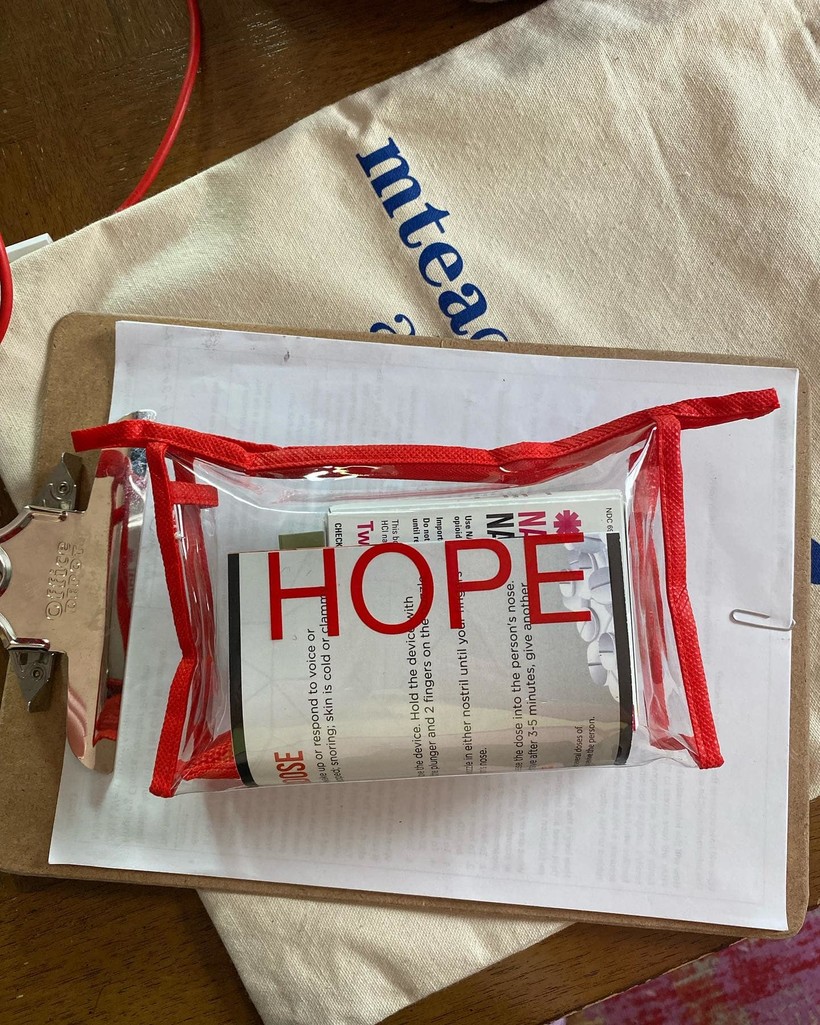Local Officials Hope Lawsuit Settlement Funds Can Reduce Drug Overdoses
644 overdose deaths in county in 2021. 'We're finally getting some resources.'
![Pills by Tom Varco (Own work) [CC BY-SA 3.0 (http://creativecommons.org/licenses/by-sa/3.0)], via Wikimedia Commons.](https://urbanmilwaukee.com/wp-content/uploads/2016/11/1024px-Lexapro_pills.jpg)
Pills by Tom Varco (Own work) (CC BY-SA 3.0), via Wikimedia Commons.
Although final numbers are pending toxicology tests, Milwaukee County Medical Examiner‘s Office estimates there were 678 drug overdose deaths in the county in 2022. That’s a 5 percent increase over last year.
If that estimate stands, it would be the fourth year in a row the county broke that record.
But Murphy and other stakeholders are hopeful $18 million the city will receive over the next 16 years from the settlement of a large, multistate lawsuit against four pharmaceutical companies will help turn the tide.
“I think we’re finally getting some resources, between the state and the federal government, but also with the settlement funds,” Murphy said.
Overdose deaths have been rising in Wisconsin over the last two decades, with much of that rise attributed to increasing problems of opioid addiction.
In 2021, 644 people died of a drug overdose in Milwaukee County. Around 80 percent of the drug deaths involved fentanyl, a synthetic opioid that’s 50 to 100 times stronger than morphine.
There were 1,427 opioid-related deaths statewide in 2021, also the highest number on record. That’s a 16 percent increase over 2020 and a 70 percent increase over the number of deaths in 2018. Twenty-one years ago, that figure was just 111.
A Wisconsin Department of Health Services report found stress and isolation suffered by many during the coronavirus pandemic as possible reasons behind the large increase in drug overdoses and deaths in recent years.
How could the money be used?
The city already received its first allocation of approximately $600,000 from the settlement. Murphy, who serves as the chairman of the Milwaukee City-County Heroin, Opioid, Cocaine Task Force, said there will now be two requests for proposals put out for how to use those funds.
Earlier this month, the Milwaukee County Board of Supervisors allocated $11 million it received from its portion of the settlement to 15 projects over the next three years. Projects include increasing harm reduction supplies and boosting education and prevention programs, and treatment programs for youth who are already using opioids.
What’s being done?
In 2019, the Milwaukee Fire Department partnered with the Milwaukee Health Department and other community partners to start the Milwaukee Overdose Response Initiative. Within 24 hours after an overdose, members of the fire department and a peer support specialist attempt to contact the person who overdosed to try to get them into treatment.
In 2022, the team made about 4,500 contact attempts following overdoses. Many of those attempts were unsuccessful, either because that person was not home or because of incorrect information. But the team did engage with a total of 616 unique clients, or individuals they hadn’t interacted with before. Sixty-eight individuals also accepted a referral to treatment in 2022, according to data from the team.
“More than 50 percent of the people that we go to see are over the age of 40,” Milwaukee Fire Department Captain Gregory Miller said during a city meeting last week. “We found that interesting — you’d think they’d be a younger group. That’s not the case.”
Milwaukee County will also place 25 vending machines with harm reduction tools inside throughout the county from 2023 to 2025. Those vending machines will have Narcan, medication bags, fentanyl test strips and even gun locks available for community members.
The Milwaukee Health Department distributed 1,546 Narcan kits to individuals in 2022, and just over 10,000 fentanyl test strips. The city and county gets Narcan and fentanyl test strips through the state’s Narcan Direct program.
Lexy Henn works with the Milwaukee Health Department to organize Narcan and fentanyl test strip trainings in Milwaukee. Henn said they’re also ramping up trainings at college campuses.
“As we’re seeing more and more, fentanyl is being laced with cocaine, things that are very easily accessible by college aged students,” Henn said.

A “hope kit” is shown that includes naloxone, CPR face shields, fentanyl testing strips and contact information for groups who seek to reduce drug overdoses in Milwaukee. The kits were developed by the Milwaukee Overdose Response Initiative, a partnership between the Milwaukee Health Department, the Milwaukee Fire Department and other groups that seeks to decrease the chances of drug overdoses. Substance abuse, particularly involving opioids like fentanyl, is the leading cause of death among people experiencing homelessness in Milwaukee County. Photo courtesy of MKE Overdose Prevention
Wisconsin seeing huge spike in fentanyl
John McGarry, assistant special agent in charge of Drug Enforcement Administration-Wisconsin, said fentanyl began showing up in more drugs around 2015. According to provisional data from the state, the number of fentanyl-related overdose deaths grew by 97 percent from 2019 to 2021. In the last year, synthetic opioids, primarily fentanyl, were identified in 73 percent of all drug overdose deaths. The substance was found in 91 percent of all opioid overdose deaths.
In 2021, the DEA found that 4 in 10 of the illegal fentanyl pills they seized contained a lethal dose. That’s now up to 6 in 10, McGarry said.
The DEA-Wisconsin has also seized over 130,000 illegal fentanyl pills, some designed to look like oxycodone.
McGarry said fentanyl is cheap and easy to produce in high quantities.
“It’s all over the drug stream,” he said. “Every pill that people are going to procure in Wisconsin, outside of a legitimate medical physician … must be treated like it contains a lethal dose of fentanyl.”
McGarry also said there’s likely less of a stigma attached to taking a fentanyl pill for many drug users.
“It is much easier to look at a pill in your hand that looks like an oxycodone, a Vicodin, a Xanax, a Flintstone vitamin, than it is to confront the prospect of a hypodermic injection from a potentially dirty needle,” McGarry said.
McGarry called that an “intentional market design” by illegal drug dealers and makers.
“I think that has changed some of the consumption behaviors, or the appeal of these things, in our marketplace,” he said.
Listen to the WPR report here.
Milwaukee County officials hopeful opioid settlement funds will help end record high overdose deaths was originally published by Wisconsin Public Radio.
More about the Opioid Crisis
- Menominee Tribe Has 70% Decline in Overdose Deaths, Hospitalizations - Joe Schulz - Nov 27th, 2024
- Serenity Inns: A Proven Lifesaving Facility Denied Critical State Funding - Serenity Inns - Nov 19th, 2024
- Milwaukee County Outreach Team Going Door-to-Door Handing Out Narcan in High Overdose Areas - Evan Casey - Nov 14th, 2024
- DHS Launches New System to Help Communities Track and Respond to Overdose - Wisconsin Department of Health Services - Nov 14th, 2024
- Attorney General Kaul and Bipartisan Coalition of 30 States Announce Settlement with Kroger Over Opioid Crisis - Wisconsin Department of Justice - Nov 6th, 2024
- Baldwin Calls on Biden Administration to Investigate China’s Role in Fueling the Fentanyl Crisis - U.S. Sen. Tammy Baldwin - Oct 23rd, 2024
- Baldwin Brings Home $750,000 for Northeastern Wisconsin to Combat Fentanyl and Opioid Epidemic - U.S. Sen. Tammy Baldwin - Sep 27th, 2024
- AG Kaul Meets with EMS Leave Behind Program Recipients - Wisconsin Department of Justice - Sep 17th, 2024
- MKE County: Crowley Signs Opioid Program Funding - Graham Kilmer - Sep 10th, 2024
- Serenity Inns Opens New Addiction Treatment Center in Milwaukee - Serenity Inns - Aug 14th, 2024
Read more about Opioid Crisis here
Political Contributions Tracker
Displaying political contributions between people mentioned in this story. Learn more.




















